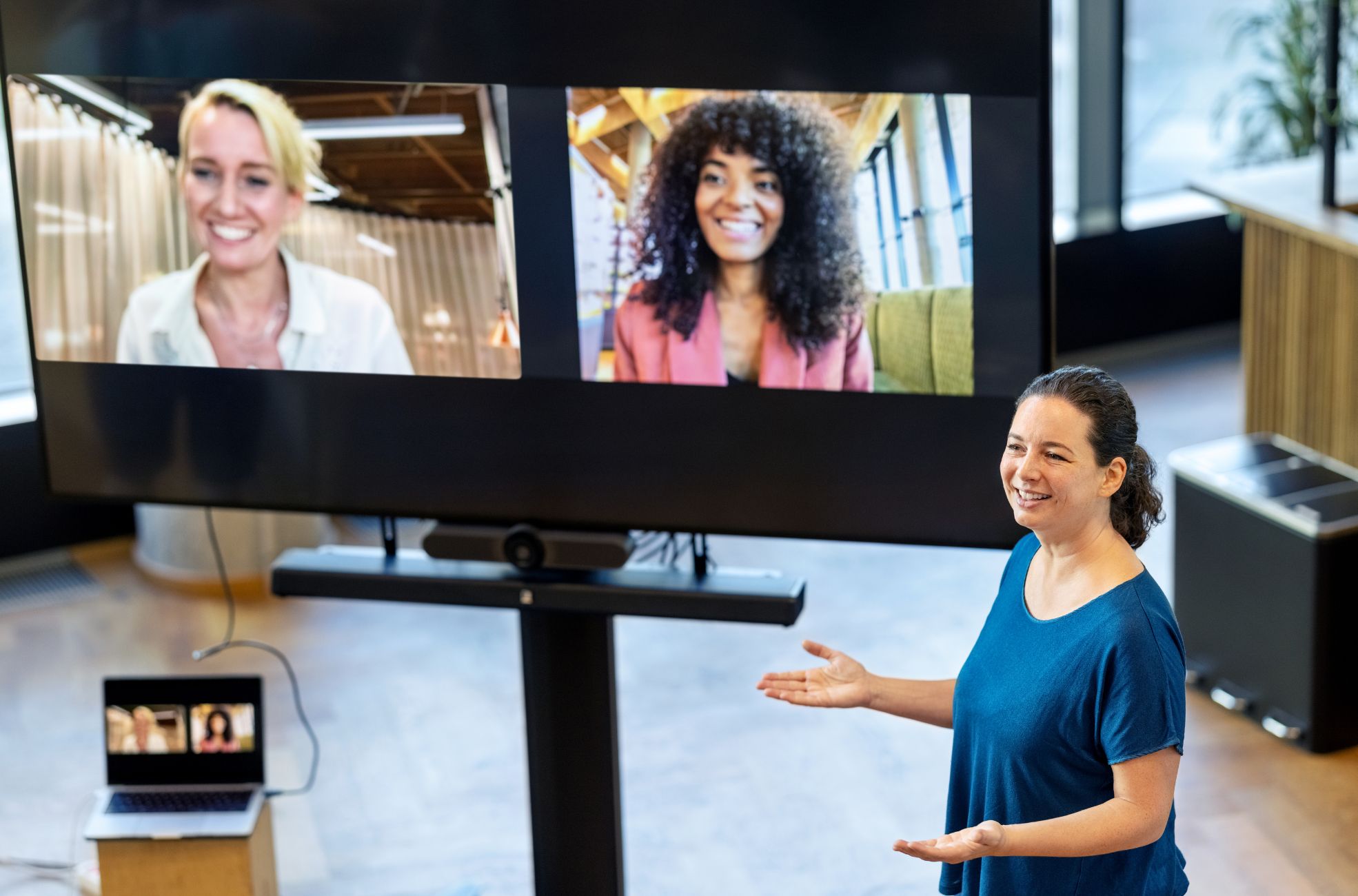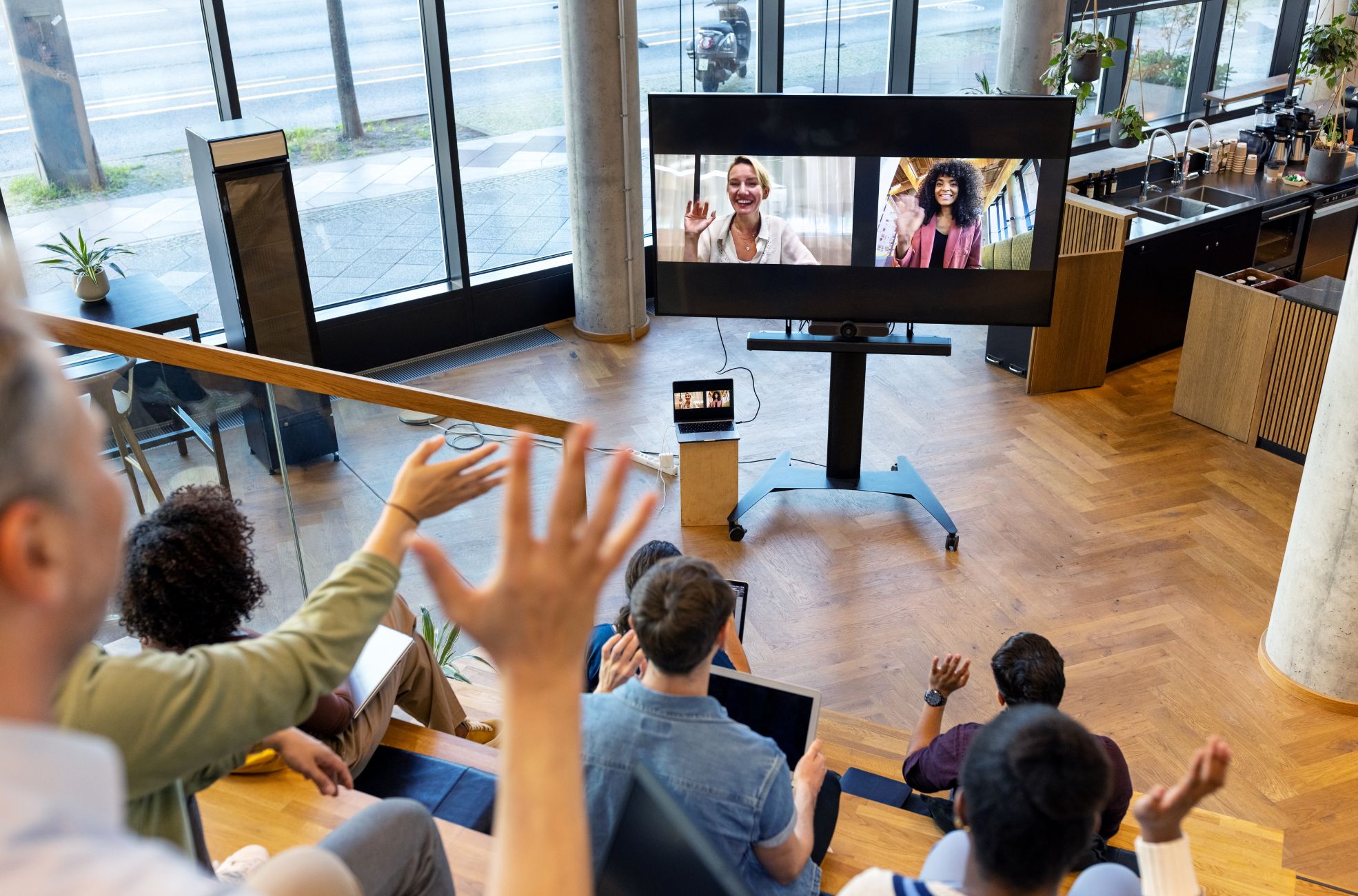A Hybrid Event is the next step in the evolution of conferencing. It combines the traditional in-person gathering with a virtual component to create an inclusive and dynamic experience. In an age where connectivity and flexibility are paramount, these events have become vital tools for organisations aiming to maximise their reach and engagement.
Whether you’re a seasoned event organiser or new to the domain, knowing how to host a hybrid event can unlock a world of possibilities. It’s not just about providing a live stream for online viewers; it’s about crafting an interactive, cohesive experience that resonates with attendees, no matter where they are.
With careful planning, the right technology, and a focus on audience engagement, hosting a successful hybrid event can be an enriching endeavour.
What Are Hybrid Events?
Hybrid events are contemporary gatherings that blend in-person and digital experiences. They create a unified event accessible to both live attendees and remote participants. These events aren’t just live events with a streaming option or virtual events with a physical component tacked on.
Instead, they’re meticulously crafted to cater to both audiences, ensuring that each group receives a tailored and engaging experience. The design of hybrid events is intentional, with each physical or virtual segment specifically developed to encourage interaction and participation.
Key Features of Hybrid Events
The essence of hybrid events lies in their dual nature, combining traditional event elements with innovative digital technologies. This integration often includes leveraging audio-visual equipment, virtual reality, on-demand content, and interactive media. These tools foster a sense of community and dialogue among participants, no matter where they are.
Key components of a successful hybrid event include engaging content, effective marketing, and seamless registration processes. Additionally, these events are characterised by a live component that synchronises the in-person and virtual experiences. This ensures that all on-site or online attendees can engage with the event in real-time.
Benefits of Hosting Hybrid Events
Hosting a hybrid event comes with a plethora of advantages. Organisers can expect a broader reach, as the virtual aspect allows individuals who may be constrained by geography, time, or resources to participate. This inclusivity expands the potential audience and enhances the event’s flexibility, allowing for a more diverse and global attendance.
Moreover, hybrid events can lead to increased revenue streams through powerful sponsorship opportunities and the ability to attract a wider audience. Due to reduced travel requirements, the eco-friendly nature of these events also contributes to their appeal.
From a data perspective, hybrid events are invaluable. They enable the collection of insightful data and analytics from both in-person and virtual attendees, offering a comprehensive view of audience engagement and behaviour. You can leverage this data to improve future events and effectively tailor marketing strategies.
Additionally, the content generated for hybrid events often has a longer lifespan. Virtual materials can be accessed and revisited post-event, extending the event’s impact and reach.
Differences Between Virtual, In-person, and Hybrid Events
Recognising the distinctions between virtual, in-person, and hybrid events is essential for event planners. Virtual events are entirely online, with no physical venue. They rely on digital platforms to deliver content and facilitate interaction. On the other hand, in-person events take place at a physical location where attendees gather in a shared space. Hybrid events merge these two formats, offering a composite experience catering to live and remote audiences.
Unlike purely virtual or in-person events, hybrid events require a unique approach to engagement, content delivery, and technology integration. They’re not just about broadcasting live sessions to an online audience; they involve creating parallel experiences where in-person and virtual attendees can interact with the event and each other meaningfully.
The success of a hybrid event hinges on treating both audiences with equal importance and ensuring that the event journey is satisfying for all participants, regardless of how they choose to engage.

Planning Your Hybrid Event
Setting Objectives and Goals
Embarking on your hybrid event journey requires establishing clear objectives and goals that are both ambitious and attainable. These should reflect what you aim to accomplish, considering the dynamics of virtual and in-person experiences. Employing the SMART criteria can assist in ensuring your objectives are viable.
For instance, to broaden your brand’s reach, you might aim for a certain increase in social media followers or a target number of leads to capture during the event. Objectives such as mastering the hybrid format, creating a symbiotic relationship between the two components, and engaging audiences on multiple levels are essential. To measure success, consider strategies like maximising sponsorship opportunities, integrating brand elements throughout the event, or providing content access after the event.
Additionally, it’s crucial to establish effective data collection methods for all attendees, ensuring that the information is smoothly incorporated into your CRM systems.
Choosing the Right Platform and Tools
Selecting the appropriate platform and tools is essential. The chosen platform should facilitate a blend of branding, content distribution, personalised schedules, and networking opportunities. It must also offer robust attendee tracking and reporting features, which are essential for evaluating the event’s impact.
When selecting a platform, the specific requirements of your event must be a priority. Whether it’s a live studio event that demands high-quality production or a model that connects multiple locations, the technology should align with your objectives. Additionally, the platform should accommodate your audience’s preferences, enabling them to select how they wish to participate and ensuring an immersive and interactive experience for all.
Budget Considerations
Financial planning is imperative. Your budget should encompass the event’s physical and digital facets, including venue expenses, technology investments, and personnel. Resources must be allocated for essential equipment such as reliable internet, cameras, lighting, and audio devices, as well as for the support systems that will ensure the event’s smooth operation.
Securing sponsorship can be an effective way to defray costs while providing added value for participants. It’s important to highlight the unique advantages of hybrid events to potential sponsors, focusing on the expanded reach and engagement possibilities inherent in a dual-format event.
Creating a Timeline and Checklist
A detailed timeline and checklist are vital for event planning. They assist in monitoring progress and ensuring that every aspect is addressed. Each step should be carefully planned, from the early stages of planning to the follow-up after the event.
This includes establishing deadlines for content development, communicating with participants, and conducting technical rehearsals. Assigning clear roles and responsibilities is essential to avoid confusion during the event. Flexibility is also important, as hybrid events may present unexpected challenges that necessitate swift and adaptable responses.
With a thorough event plan and an organised approach, you can confidently manage the intricacies of a hybrid event.

Technical Setup for Hybrid Events
The technical infrastructure is the backbone of a hybrid event, and it’s crucial to get it right to deliver a consistent level of experience across all participants.
Essential AV Equipment
The AV equipment plays a pivotal role in the success of a hybrid event. This includes HD webcams or professional cameras, microphones, speakers, and lighting to ensure that both the in-person and online audiences receive clear and crisp audio-visuals.
Additionally, having a venue that’s conducive to setting up such equipment is vital. Preparing a checklist is advisable to ensure that all necessary gear is accounted for and operational.
Streaming Technology Choices
Selecting the right streaming technology is another critical decision for hybrid events. The chosen platform should offer features facilitating remote and in-person participant interaction. Features such as live chat, polls, Q&A sessions, and breakout rooms are important.
The platform should also be intuitive, easily navigable, and compatible across various devices to accommodate all users. Integration support, analytics, and consistent customer and technical support are other factors to consider when choosing a platform. This ensures that you can manage the event effectively, and any insights gained can be used to improve future events.
Ensuring Reliable Internet Connectivity
Reliable internet connectivity is the lifeline of a hybrid event. Venues must be vetted for adequate Wi-Fi connections, power supply support, and sufficient bandwidth to handle live streaming.
An average download and upload speed of 50 Mbps is recommended for live-streaming events. This ensures that online attendees can participate without interruptions.
Handling Technical Rehearsals
Conducting technical rehearsals is an investment in the smooth execution of the event. Rehearsals allow the event team to practise the flow, familiarise themselves with the content and technology, and define the roles of the host, speakers, and technical team. They also provide an opportunity to identify and rectify any gaps in planning.
By simulating the live event, the team can ensure that all technical aspects, from microphone setup to internet connectivity, are functioning correctly. Any last-minute issues can be addressed promptly, ensuring a smooth experience for all involved.

Engaging Both Audiences
Designing Interactive Content
To ensure the content resonates with all participants, it’s essential to incorporate interactive elements that captivate and involve them. Innovative technology facilitates this by enabling the integration of features such as live polls and real-time engagement tools. For instance, platforms like Kumospace can enhance the virtual experience with customisable rooms and spatial audio, which complement the physical event elements.
Techniques for Audience Participation
Encouraging audience participation is a must. Live video is often more engaging than pre-recorded segments, and virtual facilitators can serve as liaisons between presenters and remote attendees, helping them feel included. Networking opportunities facilitated by video conferencing tools with breakout room capabilities allow for personal interactions. Utilising social media hashtags can also stimulate conversation and engagement before and during the event.
Balancing Attention Between In-Person and Online Participants
It’s important to ensure that neither audience feels secondary. Presenters should adeptly engage with both the in-room audience and the camera to maintain a connection with remote attendees. Organisers should provide equal value for both audiences, with tailored registration options and targeted campaigns. Understanding and catering to the diverse needs of these audiences is facilitated by tools like live polling and session check-ins.
Feedback and Q&A Sessions
Feedback and Q&A sessions are integral to the interaction. These should be structured to allow for direct communication between attendees and speakers. Organisers should clearly communicate how questions can be submitted and consider anonymity to encourage broader participation.
Addressing all inquiries with professionalism and promising to follow up on unanswered questions post-event demonstrates respect for the audience’s curiosity. Concluding with a summary of the points covered, additional resources, and clear next steps can help maintain engagement after the event concludes.

Post-Event Activities
Gathering Feedback and Evaluations
After the conclusion of a hybrid event, it’s essential to collect feedback to assess the event’s effectiveness and inform future planning. Crafting surveys tailored to both in-person and online attendees is necessary. These should be comprehensive, touching on aspects specific to the hybrid format.
Incorporating quantitative and qualitative questions in the surveys will yield measurable data and in-depth insights. This feedback is instrumental in refining future event strategies and pricing models. Additionally, conducting interviews or focus groups can unearth a deeper understanding of attendee experiences.
Selecting a representative sample of participants for these discussions can uncover insights that may not be captured through surveys alone. Facilitating a space where attendees can share freely will encourage candid feedback. Probing with open-ended questions can elicit detailed responses that highlight strengths and pinpoint areas for enhancement.
Analysing Event Success Metrics
Analysing the feedback is a step toward understanding the event’s impact and identifying opportunities for improvement. Organising the feedback into categories such as content, speaker engagement, logistical execution, and overall attendee satisfaction facilitates a structured review process.
Quantitative data, such as numerical ratings, can reveal attendee preferences and highlight successful aspects of the event. Qualitative feedback provides context and depth, offering a narrative of the attendee’s journey.
Combining these insights allows organisers to discern patterns and focus on modifications that can elevate the attendee experience. Sharing these findings with stakeholders ensures a unified approach to event evolution.
Leveraging Recordings for Future Use
The content captured during hybrid events can be repurposed to extend the event’s value beyond its conclusion. Recordings can be used for marketing purposes, to recap the event’s key moments, or to provide access to those who could not attend in real time.
Follow-up Strategies with Attendees
Post-event engagement is key to securing valuable feedback. Tailored follow-up communications can express gratitude and highlight the significance of attendee input. Providing straightforward instructions for completing surveys and issuing reminders can enhance response rates.
Communicating the implementation of changes based on feedback demonstrates a commitment to continuous improvement. Establishing ongoing feedback mechanisms, such as online forms or community forums, invites attendees to remain engaged and contribute to the evolution of future events. Incentives can also be a motivator for continued attendee involvement.
Embracing the Future of Events
Hybrid events represent the cutting edge of how we gather, network, and learn in an increasingly connected world. As we’ve explored, hosting such an event requires a deft blend of strategy, technology, and creativity. By ensuring that both virtual and in-person audiences receive a well-crafted, engaging experience, you can create events that fulfil their immediate objectives and leave a lasting impression.
Whether it’s your first foray into the hybrid format or you’re looking to polish your approach, remember that the key to success lies in balance, inclusion, and adaptability. As you step forward, equipped with these insights, you’re well on your way to hosting hybrid events that resonate, engage, and inspire. Happy planning, and best of luck in pioneering the future of your events!







